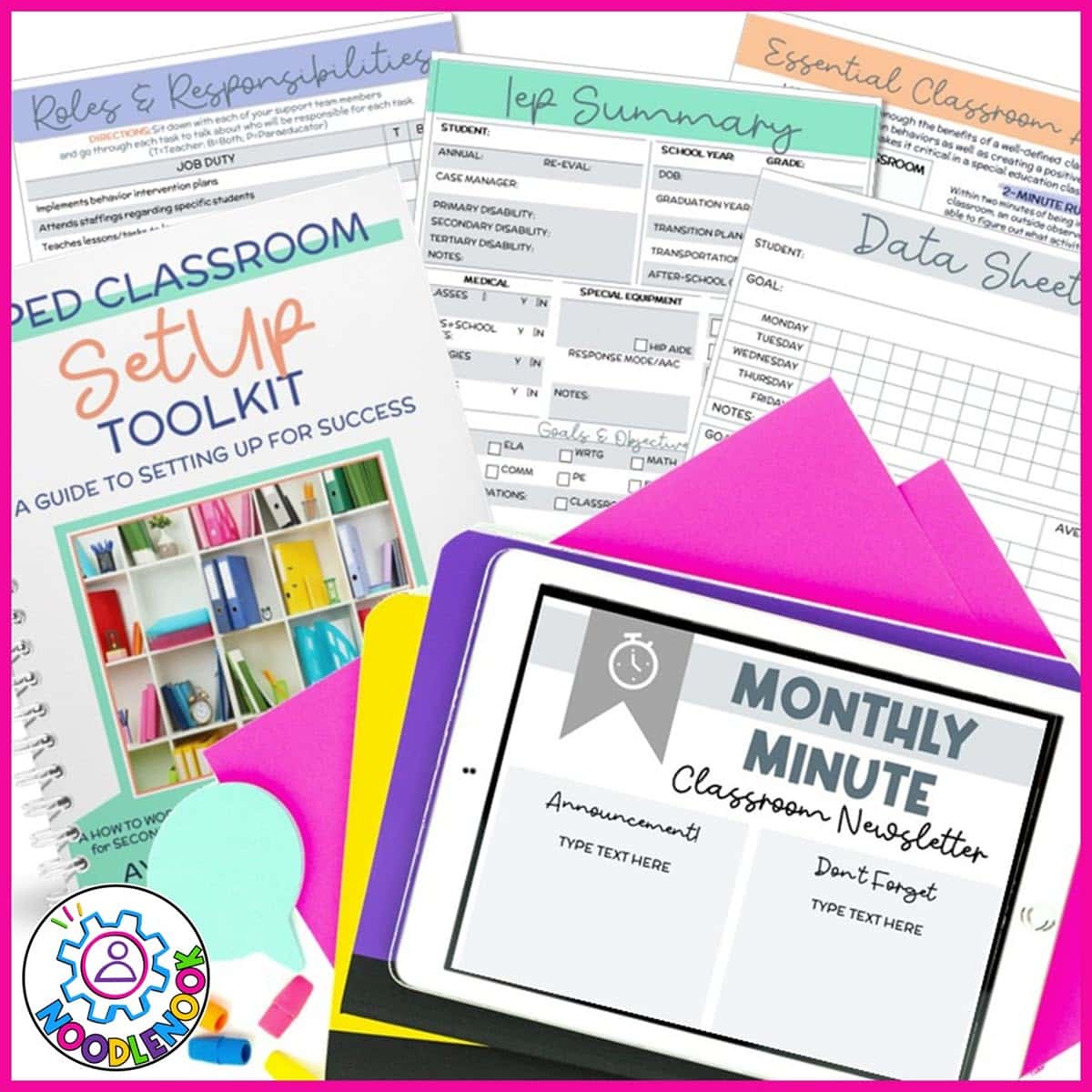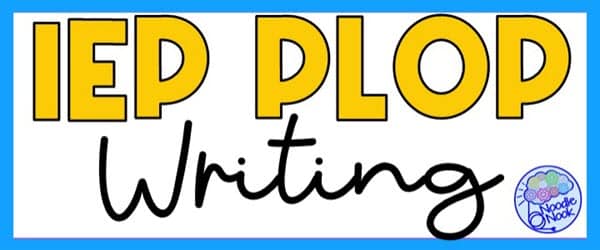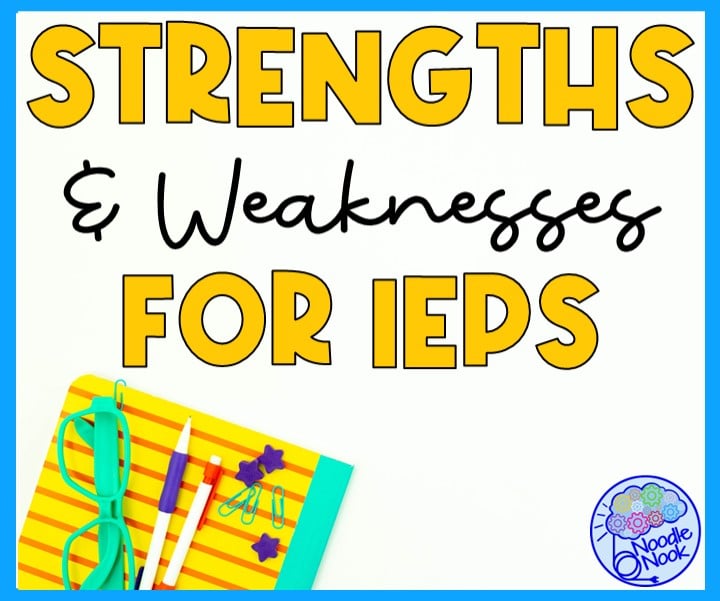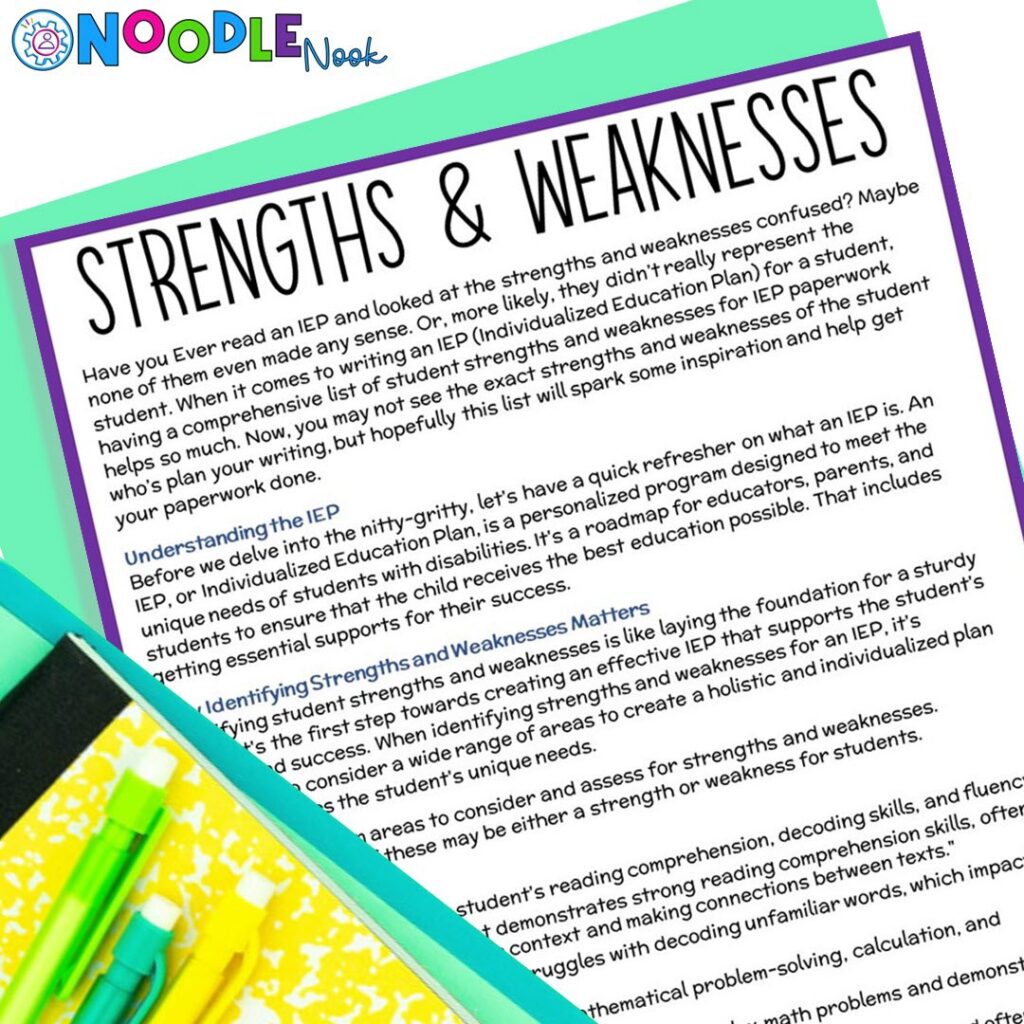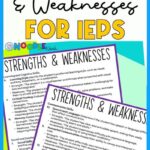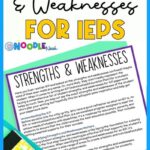Have you ever read an IEP and looked at the strengths and weaknesses confused? Maybe none of them even made any sense. Or, more likely, they didn’t really represent the student. When it comes to writing an IEP (Individualized Education Plan) for a student, having a comprehensive list of student strengths and weaknesses for IEP paperwork helps so much. Now, you may not see the exact strengths and weaknesses of the student who’s plan your writing, but hopefully this list will spark some inspiration and help get your paperwork done.
Understanding the IEP
Before we delve into the nitty-gritty, let’s have a quick refresher on what an IEP is. An IEP, or Individualized Education Plan, is a personalized program designed to meet the unique needs of students with disabilities. It’s a roadmap for educators, parents, and students to ensure that the child receives the best education possible. That includes getting essential support for their success.
As a case manager, you are likely The one who’s responsible for providing IEP paperwork during the IEP meetings. You may also have support and input from general education teachers or other classroom teachers the student may have. However, as the case manager, it’s up to you to write the student’s statement on present levels, outlining the student’s strengths as well as weaknesses, and also their academic performance. All this information guides the annual goals and helps determine the special education services a student will receive.
While a student’s plan is not the be-all-end all of their academic success, knowing a student’s needs is one of the best ways to develop a strength-based IEP. Using strength-based IEPs is important to student success as it provides critical insight into how to support the student effectively in the school setting. It also helps classroom teachers and related service providers draft IEP goals that best connect students to their post-secondary goals.
Why Identifying Strengths and Weaknesses Matters
Identifying student strengths and weaknesses is like laying the foundation for a sturdy house. It’s the first step towards creating an effective IEP that supports the student’s growth and success. When identifying strengths and weaknesses for an IEP, it’s important to consider a wide range of areas to create a holistic and individualized plan that addresses the student’s unique needs.
When members of IEP teams take time to identify weaknesses of a student as well as their greatest strength, not only does it make writing goals easier, but it also helps to create a strengths-based IEP. On top of that, knowing a student’s emotional strengths or academic strengths, especially as special education teachers, Can really help mitigate some difficult situations. Yup, you caught that right. Knowing the strength of the child as well as where they struggle can keep bad behaviors at bay.
List of Student Strengths and Weaknesses for IEP
Here are the main areas to consider and assess for strengths and weaknesses. Remember, each of these may be either a strength or a weakness for students.
Academic Abilities:
- Reading: Assess the student’s reading comprehension, decoding skills, and fluency.
- Mathematics: Evaluate their mathematical problem-solving, calculation, and conceptual understanding.
- Writing: Consider their writing skills, including spelling, grammar, and organization.
- Science and Social Studies: Examine their proficiency in these subject areas.
- Technology: Assess their ability to use and navigate technology, including computers and software.
Learning and Cognitive Skills:
- Learning Style: Identify the student’s preferred learning style, such as visual, auditory, kinesthetic, or a combination.
- Critical Thinking: Evaluate their ability to think critically, solve problems, and make connections.
- Memory: Assess their memory retention and recall abilities.
- Executive Functioning: Analyze their organizational skills, time management, planning, and impulse control.
- Attention and Focus: Determine if they have difficulty sustaining attention and focus on tasks.
Social and Emotional Development:
- Social Skills: Assess their ability to interact with peers, make friends, and engage in positive social behaviors.
- Emotional Regulation: Evaluate their ability to manage and express their emotions in a healthy manner.
- Self-Esteem: Consider their self-perception and self-confidence.
- Empathy and Perspective-Taking: Assess their capacity to understand and empathize with others’ feelings and perspectives.
- Behavioral Issues: Identify any challenging behaviors that may impact their learning and social interactions.
Communication Skills:
- Speech and Language: Determine if the student has speech or language difficulties that affect communication.
- Nonverbal Communication: Assess their ability to convey and interpret nonverbal cues.
- Expressive and Receptive Language: Evaluate their ability to express themselves and understand spoken or written language.
Physical and Motor Skills:
- Fine Motor Skills: Examine their dexterity, handwriting, and fine motor coordination.
- Gross Motor Skills: Assess their physical coordination and movement abilities.
Special Talents and Interests:
- Artistic and Creative: Recognize any artistic talents, creative abilities, or special interests.
- Athletic or Physical: Identify any sports or physical activities in which the student excels or shows interest.
- Hobbies and Interests: Consider any hobbies, passions, or unique interests that could be incorporated into their education.
Adaptive Skills:
- Daily Living Skills: Assess their ability to perform daily tasks such as personal hygiene, meal preparation, and self-care.
- Independence: Determine their level of independence and self-sufficiency in various life skills.
Sensory Sensitivities:
- Sensory Processing: Identify any sensory sensitivities that may affect their comfort in different environments.
Motivation and Engagement:
- Intrinsic Motivation: Evaluate their internal drive and motivation to learn.
- Engagement: Assess how engaged and enthusiastic they are about their educational experiences.
Are you wondering how to phrase these positives and negatives about a student in terms of writing the IEP present levels (sometimes called PLAAFP or PLOP statements) and annual paperwork? No worries. Here is your EASY button! Just download this FREE resource for student strengths and weaknesses and make life way easier!
The IEP: A Personalized Roadmap
Remember, the IEP is all about creating a personalized roadmap for each student. It’s not a one-size-fits-all approach. By identifying and addressing both strengths and weaknesses, we can craft a plan that empowers students to reach their full potential.
Whenever you use a preset list of student strengths and weaknesses for IEP paperwork, it’s essential that you also take the time to personalize each statement for the student. Nothing worse than sitting in an IEP and reading the paperwork out loud and realizing it’s not a good reflection of the student it’s supposed to represent. Personalization is the key to success!
The other important thing to consider here is honesty. This document is meant to support teachers and the school district as they provide appropriate support for students. If a student has terrible problem-solving skills or an extremely short attention span, don’t dress that up as their top strengths. Acknowledge where a student is struggling, but also make it a point to include the strength of the child as well as their academic growth over the last year.
Also, remember that your strengths and weaknesses can include functional performance, how a student handles themselves in social situations, or other skill areas that relate to executive functioning in daily life. This is especially true for case managers supporting students who are over 18 and working on transition or vocational goals to prepare for life after graduation.
So that means personalization is key to success, but honesty and personalization go hand in hand.
RECAP: List of Student Strengths and Weaknesses for IEP
Just to recap, it’s crucial to compile a comprehensive list of student strengths and weaknesses for IEPs. Try to consider this section of the IEP, a true snapshot of the student. Reference different categories to maintain some variety and always look for places where you can point out their most significant strength, not just their academic weaknesses. This holistic approach ensures that we provide the right support, capitalize on what students excel at, and address areas where they may need additional help.
This list of student strengths and weaknesses for IEP paperwork is a great start, and if you’re looking for more ways to support success this school year, check out the Ultimate SpEd Teacher Toolkit.
It’s all the supports a SpEd teacher needs to get organized and be successful.
Basically, it’s your superhero cape in a box!
